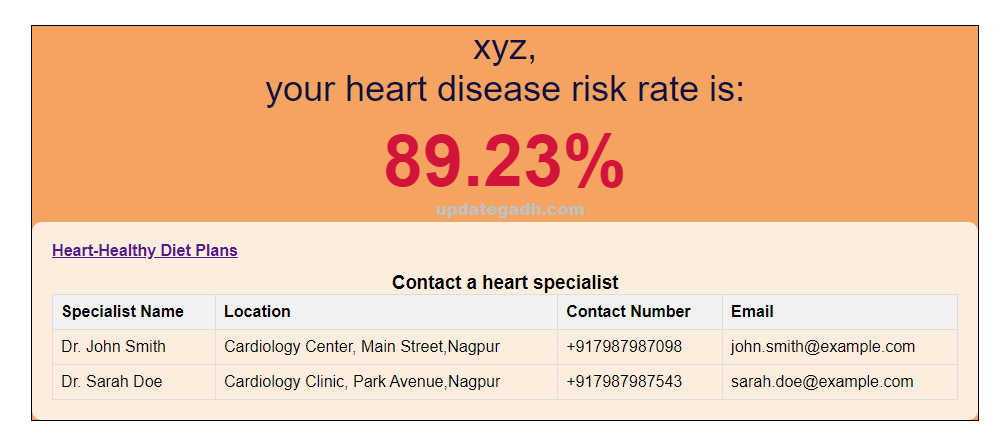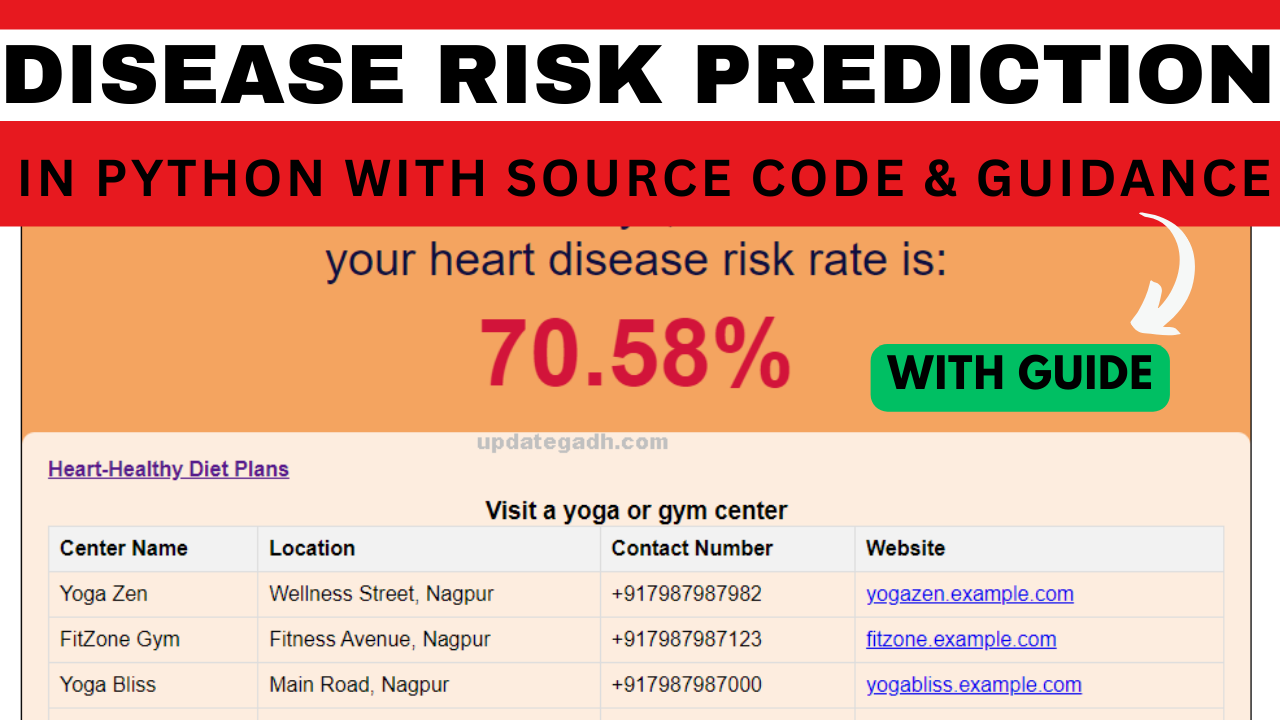Heart Disease Risk Prediction in Python
Heart disease is one of the leading causes of death worldwide, with millions of people affected each year. Early detection and prevention are crucial in reducing the risk of heart disease. In this article, we will explore how to use Python to predict the risk of heart disease using machine learning techniques.

Table of Contents
Introduction
Heart disease risk prediction involves analyzing various factors such as age, gender, cholesterol levels, blood pressure, and other health indicators to assess the likelihood of developing heart disease. By using machine learning algorithms, we can create predictive models that can help healthcare professionals identify high-risk individuals and provide timely interventions.
Step 1: Making the Project
To start with heart disease risk prediction in Python, we first need to gather a dataset containing relevant health information. Popular datasets such as the UCI Heart Disease Dataset or the Framingham Heart Study dataset can be used for this purpose. Once we have the dataset, we can begin by importing the necessary Python libraries like NumPy, Pandas, and Scikit-Learn.
Step 2: Essential Features
In the dataset, essential features such as age, gender, cholesterol levels, blood pressure, and smoking status play a significant role in predicting heart disease risk. These features need to be preprocessed by handling missing values, scaling numerical data, and encoding categorical variables before feeding them into the machine learning model.
Step 3: Required Software and Tools
For heart disease risk prediction in Python, we can utilize popular machine learning libraries such as Scikit-Learn and TensorFlow. Jupyter Notebook or Google Colab can be used for coding and visualization tasks. Additionally, understanding concepts like cross-validation, feature selection, and model evaluation is essential for building a robust predictive model.
Step 4: Running the Web Application
After training the machine learning model on the dataset, we can deploy it as a web application using frameworks like Flask or Django. By creating a user-friendly interface, healthcare professionals can input patient information and get real-time predictions of heart disease risk. This enables timely intervention and personalized healthcare recommendations for high-risk individuals.
Check 50+ JAVA Projects with Source Code
Step 5:How To Run
Downloading and Setting Up a Project in PyCharm:
- Download the Zip File:
- Visit the download link provided.
- Click on the “Download” button to download the zip file.
- Extract the File, Copy Folder, and Paste on the Desktop:
- Locate the downloaded zip file on your computer.
- Right-click on the file and choose “Extract” or “Extract Here” to extract its contents.
- You should now see a folder named “bms” after extraction.
- Copy the folder.
- Navigate to your desktop.
- Right-click on the desktop and choose “Paste” to copy the folder onto your desktop.
- Open PyCharm:
- Locate the PyCharm IDE on your computer and open it.
- If you don’t have PyCharm installed, you can download it from the official JetBrains website and follow the installation instructions.
Step 6 :Screenshots





Complete Demo Video :- Click Here
Step 7 : Download : (Note: Only for Educational Purpose)
Virus note: All files are scanned once-a-day by updategadh.com for viruses, but new viruses come out every day, so no prevention program can catch 100% of them
FOR YOUR OWN SAFETY, PLEASE:
1. Re-scan downloaded files using your personal virus checker before using it.
2. NEVER, EVER run compiled files (.exe’s, .ocx’s, .dll’s etc.)–only run source code.

- Buy This Project :-Click Here
- Download All Free Project :- Click here
Conclusion
leveraging Python for heart disease risk prediction is a powerful tool in improving healthcare outcomes and reducing the burden of heart disease. By utilizing machine learning techniques, healthcare professionals can identify individuals at high risk of developing heart disease and provide targeted interventions. Stay tuned for more updates and advancements in the field of predictive healthcare analytics.
Meta Description:
Learn how to predict heart disease risk using Python. Explore the essential features, required tools, and steps to run a web application for accurate predictions.
By following these steps and utilizing the power of Python and machine learning, healthcare professionals can make a significant impact on reducing the prevalence of heart disease and improving patient outcomes. If you are passionate about healthcare analytics and data science, this is an exciting area to explore and contribute to. Remember, early detection and prevention are key in the fight against heart disease!




![Food Management System in Python [Django Framework ]](https://updategadh.com/wp-content/uploads/2024/06/Food-Management-System-in-Python-Django-Framework--300x169.png)
